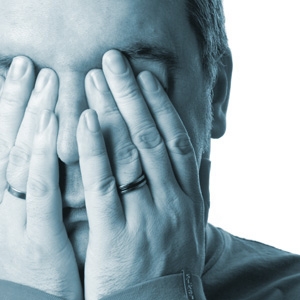Working it out
Research news
Many of us might complain about our jobs, but work is inextricably linked to our sense of well-being, both for better and for worse. Being unemployed is harmful to mental health and increases the risk of suicide in Australian adults, claims Deakin’s new Professor of Work, Health and Wellbeing, Anthony LaMontagne.
Professor LaMontagne has spent his life studying the effect of work on our physical, mental and social well-being - and is dismissive of the idea of the “dole bludger,” arguing that “the vast majority of unemployed would prefer to be in work.”
Coinciding with the recent World Suicide Prevention Day, Professor LaMontagne's team has just published the findings of a Deakin research project that explored the connection between unemployment and suicide over the period of the global financial crisis from 2007-2009.
Professor LaMontagne joined Deakin early this year to set up the University’s new Work, Health and Wellbeing Unit, which focusses on work and how it influences physical, mental and social wellbeing.
He has spent many years working collaboratively with workplace stakeholders from government, industry, and labour - and his research has influenced workplace health policy and practice in Australia and internationally.
The group's recent study was led by Dr. Allison Milner, an Honorary Fellow in the group, who is based at the University of Melbourne. The study focussed on the effects of the 2007 Global Financial Crisis (GFC) on Australian suicide rates and showed a spike in suicide amongst the unemployed. The findings reflect the role of work and worklessness within society at any time, he argues.
Published in the “International Journal of Epidemiology,” the project was one of the first suicide studies internationally that focussed on the labour force status of individual suicide cases.
The researchers obtained information on suicide cases from the National Coroners’ Information System, with a particular focus on the GFC period of 2007-2009.
The research showed that during 2001 - 2010 the overall age-adjusted annual rate of suicide in unemployed males was 57.7 per 100,000 and 20.2 for corresponding females. Among the employed, the overall suicide rate was 10.5 per 100,000 males and 2.2 per 100,000 females.
“Following the onset of the recession, there was an increase in suicides in employed men (7 per cent in 2007) - probably as a result of work stress - and the following year, in 2008, there was a large increase in suicides of unemployed men (22 per cent) and unemployed women (19 per cent),” Dr Milner said.
The study identified those most at risk as being in the “prime of their working lives,” with the connection between suicide and unemployment disappearing once people reach retirement age.
There is some good news, however. Apart from the rise during the GFC, the suicide rate in Australia has been declining since the late 1990s.
“Also, for those who are in the workforce, accessibility of means makes certain occupations at greater risk, particularly professions such as the police force and agriculture - and those in health fields and blue collar trades, who have the highest suicide rate of all occupations.”
Dr Millner said that adequate policy and social welfare responses are vital for supporting the unemployed.
People wishing to discuss suicide or depression can contact “Beyond Blue” on tel: 1300 22 4636, or contact the Suicide Call Back Service at www.suicidecallbackservice.org.au.
Share this story

